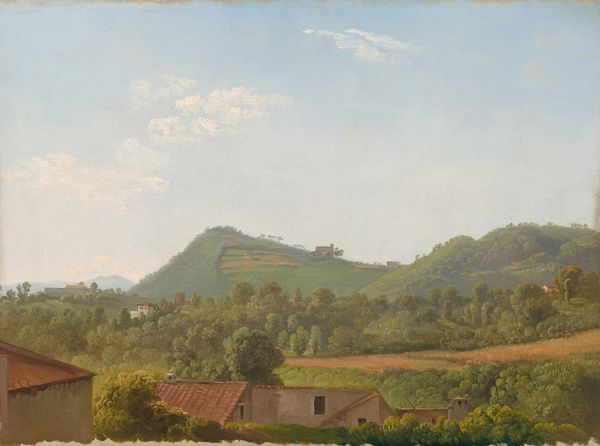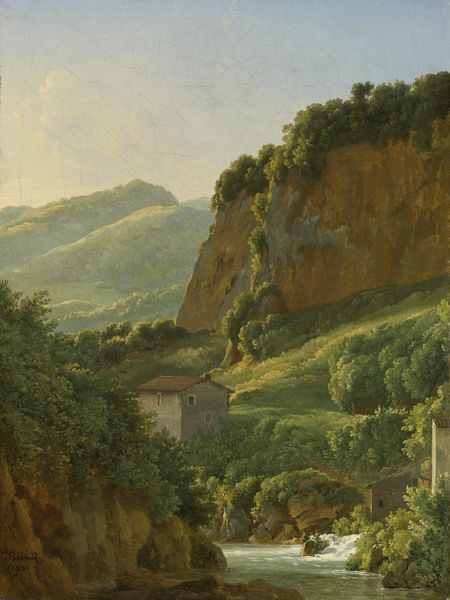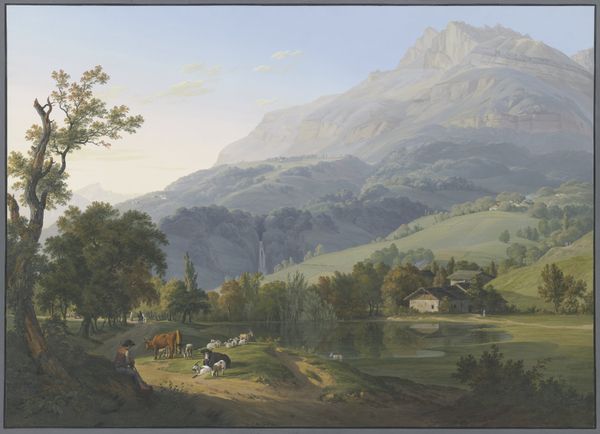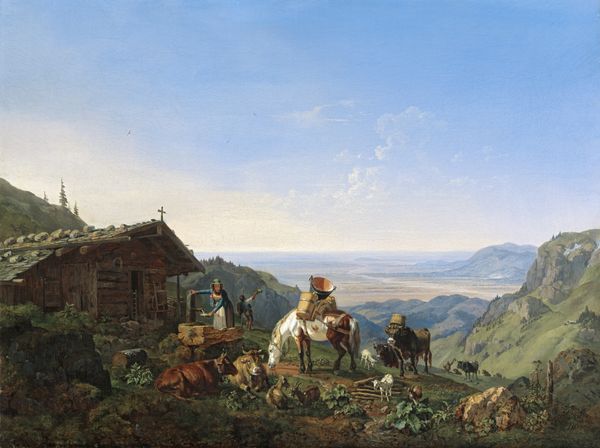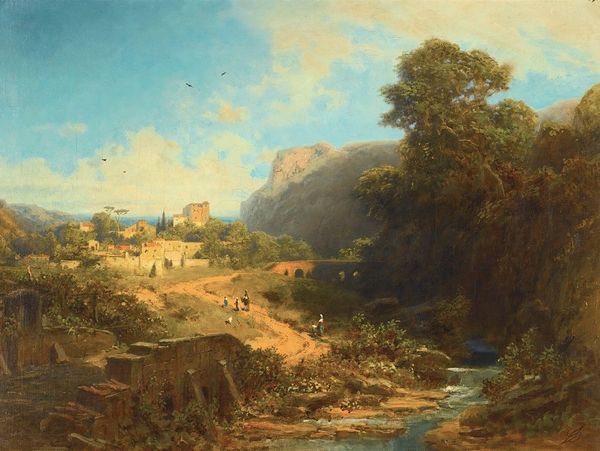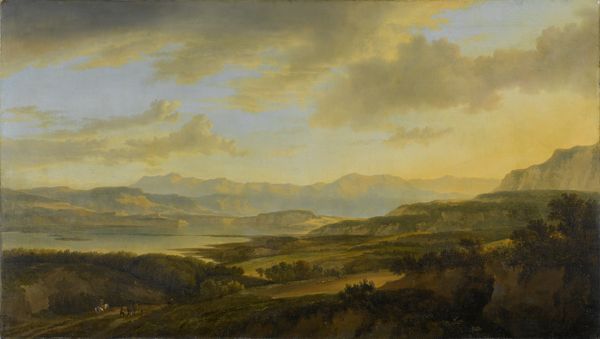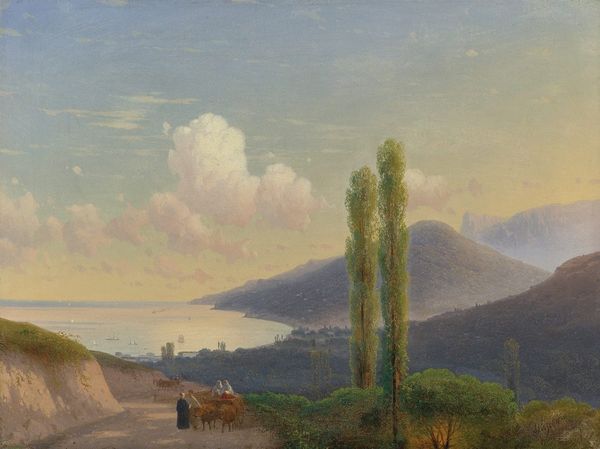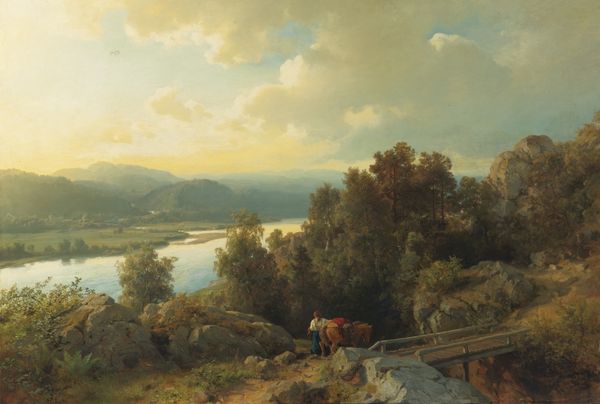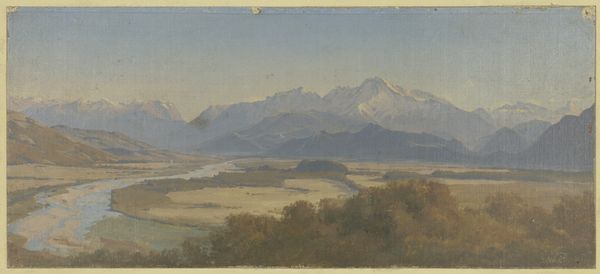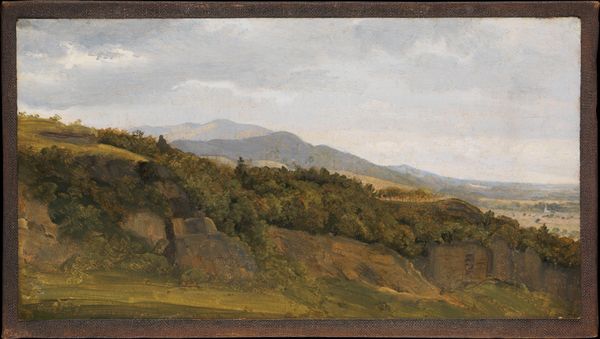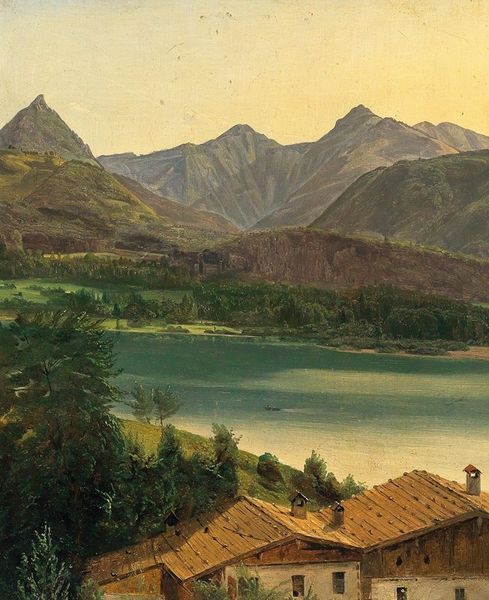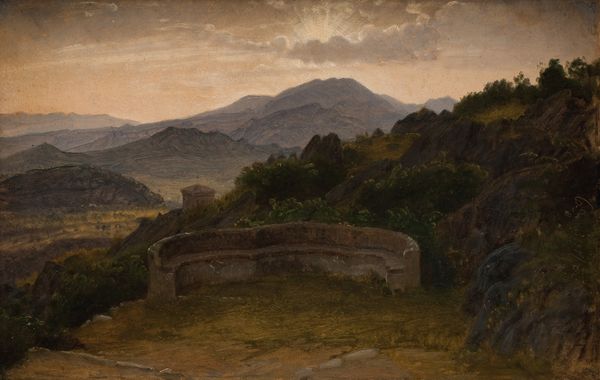
painting, plein-air, oil-paint
#
painting
#
plein-air
#
oil-paint
#
landscape
#
charcoal drawing
#
oil painting
#
romanticism
#
cityscape
#
watercolor
#
realism
Dimensions: overall: 40 x 52 cm (15 3/4 x 20 1/2 in.) framed: 59.1 x 72.1 x 7.9 cm (23 1/4 x 28 3/8 x 3 1/8 in.)
Copyright: National Gallery of Art: CC0 1.0
Editor: Here we have Alexandre Calame’s "Swiss Landscape," created around 1830 using oil paint, seemingly en plein air. What strikes me is the contrast between the vast, almost untouched mountains and the carefully cultivated patchwork of the fields below. What can you tell me about it? Curator: It's tempting to see only the Romantic vision, but let's dig into those fields. Each patch represents human labor, transforming the landscape into a productive engine. Consider the specific materials and tools that would have been used. Do you see signs of technology? Editor: Not really, everything looks rather rudimentary, like manual farming techniques. Does that speak to a tension in the painting? Curator: Precisely. Calame isn't just presenting a picturesque view; he's showing a landscape actively being shaped by agricultural practices, and perhaps pointing to a societal dependence on manual, difficult labor. Notice how the scale diminishes the people working. What does that imply about their status and worth? Editor: It almost makes their hard labor look insignificant, overshadowed by the beauty of nature. Were landscape paintings of the time often making such implicit commentaries on working class? Curator: Landscape paintings can show this relationship by obscuring laborers, framing a composition to illustrate the complex interaction of natural beauty with social implications such as poverty, agriculture, industrialization, and even early forms of tourism. Can we ignore the art's social context? I think not! Editor: That’s fascinating, seeing beyond the pretty surface to consider the economic and labor systems at play. I see it in a whole new light now! Curator: Absolutely. It's about moving beyond aesthetics and thinking critically about the social and material forces that shape not only the land, but also the painting itself.
Comments
No comments
Be the first to comment and join the conversation on the ultimate creative platform.
